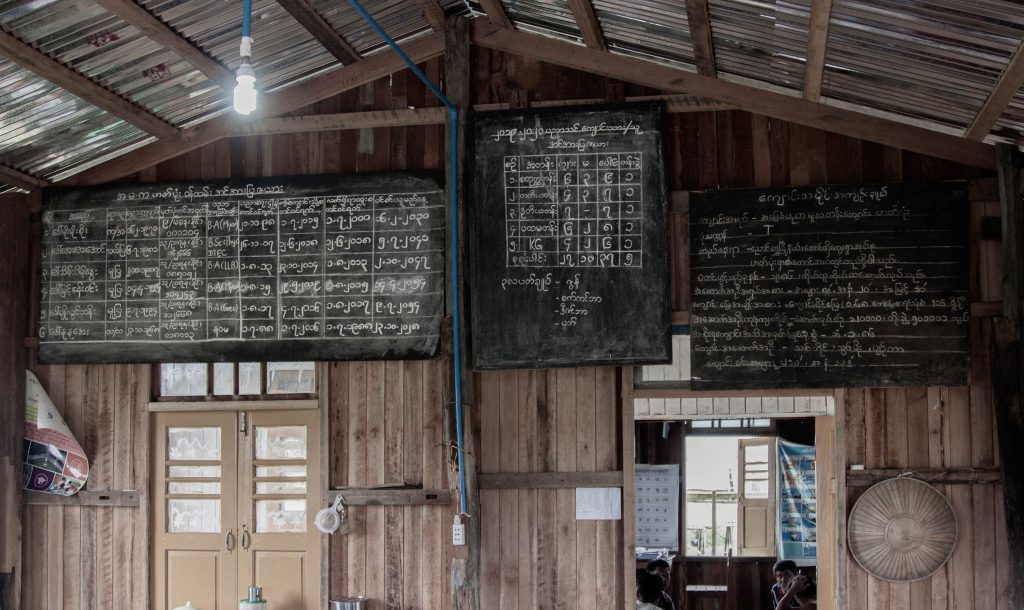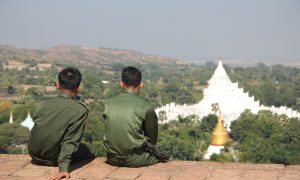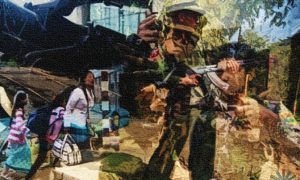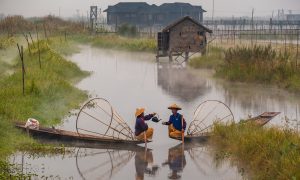The education policy to only instruct in Burmese is contentious in Myanmar. As Myanmar transitions from nearly half a century of military rule and lengthy isolation, the connections between mother tongue language and education policy have become influential in shaping the dynamics of Myanmar’s ethnic reconciliation process.
In the armed conflict between the military—largely dominated by the majority Burman group – and ethnic minority groups in several states, language functioned as a major indicator of distinct cultural identities and histories in Myanmar. When the military seized power in 1962, the regime adopted Burmese as the official national language and forced schools throughout the country to employ it as the exclusive language of instruction. In this systematic effort of “Burmanization” in the language space, the regime banned ethnic language teaching in State schools.
Education reforms began after the 2010 elections and the opening of Myanmar to the world. Beginning in 2012, ethnic languages were permitted to be taught in government schools, but only outside main school hours and with limited support from the Education Ministry. This step in affirming the recognition of ethnic languages in the government agenda illuminates the continuing detachment between formal education institutions and mother tongue language education providers, alongside key structural challenges in executing reforms. By extension, this reform raises both the psychological and cultural facets of mother tongue education in bridging disparities in education, also revealing local concerns on the practical implementation of such policy.
In 1973, the first official Shan campaign against illiteracy was launched which aimed to promote the teaching of reading and writing in Shan language. This was met by several Shan volunteer teachers, students and sponsors of these campaigns being threatened, tortured and murdered by Burmese military intelligence. A Shan father from Lashio revealed that in the 1980s, street signs in his Shan hometown were all re-written in Burmese, reflecting the organised, widespread efforts by the government to impose Burmese on non-Burman communities. This was a significant element that led to the proliferation of ethnic armed organisations and non-state education providers which maintain and continue their languages and cultures, often unregulated and under very challenging circumstances.
This policy shift signifies preliminary efforts in addressing Myanmar’s significant ethnolinguistic diversity through ethnic mother tongue education. The Myanmar Sustainable Development Plan (MSDP) 2018-2030 states a commitment to “support and promote nationalities’ languages and cultures, including curriculum development, and monitoring by state and region governments to support primary-aged children who speak different languages.”
Myanmar’s Parallel Schooling Systems: Institutional Gaps
Despite the outlined commitments by the government in the MSDP to support and promote mother tongue education, almost all ethnic language education has been delivered by non-state Ethnic Basic Education Providers (EBEPs). This proliferation of non-state educational providers resulted in parallel school systems, with Burmese used in formal learning settings while children learnt to read and write in their mother tongue languages in grassroots external and communal spaces. An interviewed Pa-O university student from Taunggyi described the recent steps to introduce ethnic language as an “outside and extracurricular activity”, emphasising that Burmese remains the dominant language in State-run environments.
EBEPs include informal community centres, home schools and monasteries used over the summer. In the case of the Pa-O language in the Shan state, non-state education providers like the Pa-O Literature and Culture Organisation organise and provide basic resources for public school teachers to teach the Pa-O language outside school hours. This reflects the strong community efforts to preserve their cultural identity outside formal spaces. However, these EBEPs are often unregulated and operations are prone to inconsistent operation, being heavily contingent on community donations through fetes and fundraising. Additionally, a Pa-O teacher in Nyaungshwe revealed that these EBEPs are limited as students attend State schools for the majority of the year and subsequently only have the opportunity to attend EBEPs during the summer months, limiting their exposure to mother tongue education. Several Pa-O parents have pointed to ongoing Burman hegemony in formal learning institutions such as the usage of Burman-centric literature, including textbooks that emphasise Buddhist teachings and stories that portray the Burmans as a grand saviour for all ethnic groups in Myanmar. The continuing cultural dominance of Burmese is voiced by Salai Za Uk Ling, an analyst from the Chin Human Rights Organisation who characterises the standardised Burmese education system as a “forced assimilation and indoctrination programme”.
The Importance of Mother Tongue Education
It is important to stress that from a purely educational standpoint, starting one’s education with their mother tongue has several advantages. Extensive pedagogical research shows that supporting mother tongue education is crucial in formative education in multilingual countries like Myanmar. A linguistically inclusive system, mother-tongue based multilingual education (MTB-MLE) is likely to improve children’s proficiency not only in their first language, but also of the standard language, while creating a foundation for other learning. Julian Watson, a British and Irish education consultant, reinforces the benefits of policies favouring mother tongue education in ensuring proficiency of Burmese and argues:
“It’s a shorter road. If you want a non-Myanmar-speaking child to speak, read and write in Myanmar language, it’s quicker to make it literate in its own language and then move to Myanmar language, rather than going straight to Myanmar language.”
Language shaming in Malaysia
Tan Zi Hao takes a look at stammering tongues and postcolonial imperialism.
The asymmetries in literacy and achievement of educational outcomes compared to Burmans is showcased in an interview with Celine Margontier-Haynes, Education Adviser at Inle Heritage Foundation. Her findings point to the common reality of many ethnic students “remembering their days at school when they could not communicate with the teachers and understand the lessons, memorising what was written on the board for the examinations.” This interview reinforces conversations from both Pa-O and Shan university students, all noting the disparities in fully engaging with the classroom environment and understanding content when they were younger. Although the gaps of literacy also lie in factors such as geography, mother tongue language remains a major factor.
Moreover, proficiency in mother tongue language leads to strengthened metacognitive skills in conceptualising abstract thoughts and communication alongside the self-actualisation of deeper understandings of personal, social and cultural identity. All Pa-O and Shan interviewees collectively agreed that their respective ethnic languages are significantly connected to their distinct cultures. Acknowledging the importance of mother tongue education policies would not only boost educational outcomes but also cultivate institutional recognition towards the cultures of Myanmar’s ethnic minorities. This would ultimately support gradual restitution of the historical trauma brought by the oppressive Burman-centric policies during the military junta. In sum, it is essential for an inclusive and peaceful pluralist society.
Balancing Local Concerns: Pa-O and Shan
Many families also revealed concern about the emergence of intergenerational conflict over cultural maintenance brought by the parallel language education. Pa-O society is hierarchical, with the elderly holding immense respect in Pa-O communities and being responsible for sharing stories to the family. A Pa-O mother shared that she is trying to speak Pa-O with her two youngest children as the eldest cannot speak the local language and does not have a close relationship with their grandparents. Respondents commented that Pa-O is “more polite” than Burmese when it comes to certain vocabulary and is better suited to expressing Pa-O literature and folklore, thus reflecting the role of language in expressing local culture.
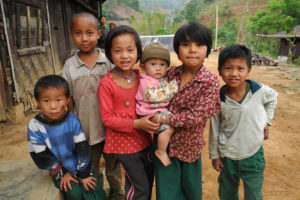
IMAGE CREDIT: AXEL DRAINVILLE VIA FLICKR
In June 2019, a case study of two State schools in Taunggyi and Inle lake revealed that despite having several native Pa-O teachers, Pa-O was never used as the language of instruction. The interviewed teachers said that they are not allowed to speak the local language and principals were Burman, pointing to the lack of prioritisation of the inclusion of ethnic language teaching. However, Pa-O cultural festivals were permitted at State schools with students permitted to wear Pa-O traditional attire on certain days. Interestingly, although many interviewed parents of Pa-O students expressed the strong desire of increased ethnic language education in formal classrooms to reflect the cultural identity of the various Pa-O students, many also feared that their children would be at a disadvantage and lack Burmese skills.
Correspondingly, several of the interviewed parents conveyed concern for the future employment opportunities of Pa-O youth. These local parental anxieties are highlighted by comments that they would rather maintain the language in family and accept the inconsistent EBEPs rather than jeopardise their children’s Burmese abilities if they later decide to work in predominately Burmese speaking work environments. Although many Pa-O parents emphasised the importance of the future of the youth, many were open to the proposed idea that an effective hybrid mother-tongue based multilingual model could allow them to achieve both recognition by the State and greater post-schooling opportunities. However, local bureaucracy and slow implementation could be a major challenge in realising this initiative.
In the written language, Burmese and Pa-O are similar as they share the same script with only minor differences. However, the major linguistic differences lie in pronunciation and word-meaning. Thus, interviewed Pa-O students expressed little disparities in written abilities. Contrastingly, Shan students face stronger dissimilarities as the Shan language utilises completely distinct vocabulary, grammar and writing system that more closely resembles Thai script.
Accordingly, by primarily focusing on the Pa-O and several interviews with the Shan, it is apparent that experiences surrounding mother tongue education are highly nuanced and heavily contingent on the unique circumstances faced by different ethnic groups. Nevertheless, this offers an insightful snapshot towards the broad consensus of language being integral to cultural maintenance. Efforts to maintain local cultures are highlighted by the capacities of non-state actors encompassing religious and civil organisations in mobilising local human and material resources, simultaneously responding to the gaps in formal education providers. All the interviewees firmly expressed a desire for language classes and early subjects in ethnic languages in State schools with many unconvinced that this would happen, indicating continued scepticism towards government policy implementation.
Ongoing issues and signs of change
As of writing, the Ministry of Education has showcased ambitious preliminary attempts to introduce mother tongue education in the formal education sector. A joint effort between State institutions like the Ministry of Ethnic affairs, non-state entities comprising of Literature and Culture Committees and UNICEF have led to the production of 3.5 million copies of storybooks for kindergarten and curriculum development for the teaching of 25 minority languages. These optimistic developments are underscored by the emergence of high-level dialogues like the International Conference of Language Policy in Multicultural and Multilingual Settings in Mandalay, suggesting the emergence of mother tongue education discourse in the governmental agenda. Only time will determine the effectiveness and feasibility of implementing these strategies to reduce gaps in educational attainment and promote inclusive development.
Although the government is making gradual progress in offering mother tongue education, fragmented teacher salary structures pose a challenge to the successful implementation of planned initiatives. Minimal funding has severely impacted the hiring, incentivising and retainment of high-quality local teachers. Many interviewed teachers in Nyaungshwe and Taunggyi, as well as a Pa-O parent, referred to payment hierarchy in the region’s school system that sees teachers working in secondary education receiving a higher salary than primary school teachers. This difference in salary illustrates the emphasis towards result-oriented outcomes in high school education, rather than crucial formative education in younger years. An interviewed Pa-O farmer who was also a former teacher said, “I don’t have much at the school, working at the farm gives me more money for my family. There is little money at the school.” This points to the need for reform on a structural level to establish long-term strategies that further integrate mother-tongue education. It is recommended that the curriculum be revisited to ensure that the significant investment in multilingual textbooks are effectively streamlined into existing teaching practices and education structures.
Seeing the high costs in integrating mother tongue education, another idea worth considering lies in the exploration of opportunities in accrediting studies through partnerships with EBEPs under a framework of agreed minimal standards. Moreover, funding EBEPs as valued stakeholders in delivering broader inclusive education under a cross-institutional curriculum would lead to a solid hybrid-model, establishing linkages between local learning and the formal education sector.
In 2017, the government introduced ethnic language teaching assistants (TAs). The Department of Basic Education designed this programme to improve the literacy rate in ethnic regions by employing ethnic minority students who passed grade ten and were proficient in their local ethnic language. The government has since incentivised this program by creating pathways for TAs to become permanent teachers in their region. In the first round of 5,161 of the recruited TAs in 2017-2018, around 1170 are undergraduates alongside TAs with lesser academic qualifications being prepared for matriculation exams for professional and university teaching qualifications. As of July 2019, TAs aimed at Pa-O students have not been observed in visited schools in Taunggyi and Nyaungshwe, suggesting slow implementation. Accordingly, it is too early to assess the effectiveness of this reform.
Conclusion: Pathways for the future
The multi-faceted matter of mother tongue language education is a double helix. The first strand is the importance of the delivery of mother tongue language education as an essential social service, reducing disparities in literacy and boosting active societal participation by children and youth.
The second strand is the political and structural concerns as government services grow and expand into conflict-affected areas. Coordinating with and supporting EBEPs as valued stakeholders towards ethnic language education will encourage peaceful and politically inclusive educational development in Myanmar. By mitigating the significant financial and political costs of forming a State-run mother tongue education system, it would be beneficial to implement gradual structural reform of the existing parallel system into a hybrid MTB-MLE model. Through recognising the educational and political benefits alongside the complementarity of diverse education providers, mother tongue education reform would forge long-term pathways for further ethnic reconciliation in the broader peace process.
 Facebook
Facebook  Twitter
Twitter  Soundcloud
Soundcloud  Youtube
Youtube  Rss
Rss 